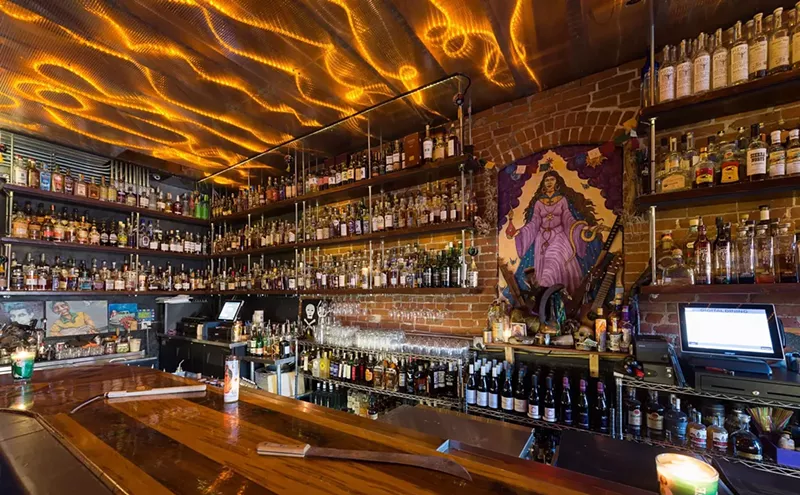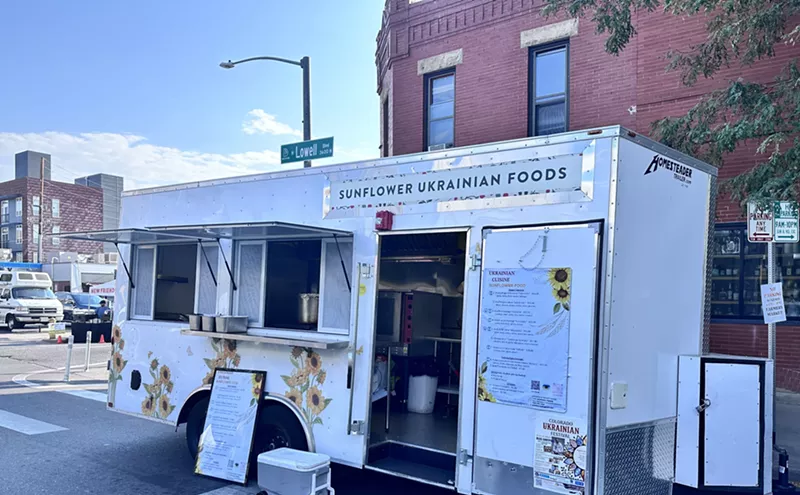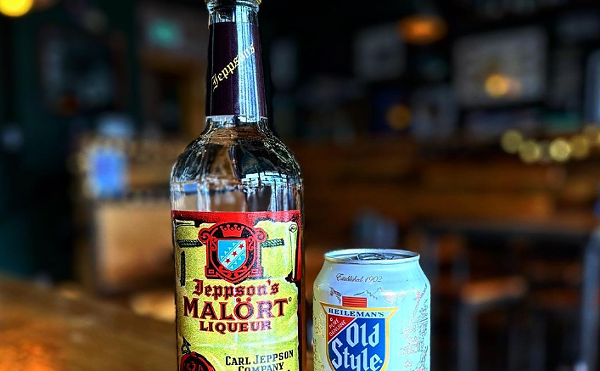"When Lily applied for a restaurant license, the government didn't know what to call Chada," says Pete Chittivej, Lily's grandson and the manager of Chao Praya. "There was no listing for Thai in the classifications."
What a difference a few decades make. Thai food is now one of the hottest cuisines--literally and financially--in the country. Unfortunately, Chao Praya's kitchen is still stuck in the Sixties, cooking Lily's original recipes that by now could use some updating--or at least more attention from the staff.
We visited Chao Praya on a Monday, which admittedly can be a risky night at many restaurants because the head chef often takes the evening off. And indeed, Pop and his wife, Nita, were nowhere in sight. But I couldn't wait any longer to try the phad thai that my two dining companions had raved about since they sampled it at the Taste of Colorado.
First, though, we ordered the Grand Palace, a $4.25-per-person appetizer platter. Unfortunately, the waiter brought only a single-person serving (and later charged us accordingly), which meant the three of us had to cut each tidbit into thirds and fight over the scraps of our favorites. The meang-kum tasted like a hot PayDay candy bar: The sticky bundle of toasted, grated coconut was studded with peanuts, dried shrimp, shards of fresh ginger and plenty of red-chile flakes, all wrapped in a piece of lettuce and drizzled with a sugary brown sauce. Another winner was Chao Praya's fish cake, tod-mun, a crispy-on-the-outside, tender-on-the-inside patty of ground fish whose light garlic flavor mingled well with the chile heat. The Thai delight, on the other hand, was a simpering little steamed pork dumpling; the satay--a chewy piece of pork sprinkled with peanuts and sitting in a mild curry goo--another snooze; the zucchini a waterlogged sponge inside a greasy shell of batter; and the fried won ton a huge wrapper housing just a dab of filling--curried beef and potatoes, we were told, but who could tell?
And when Chao Praya calls its egg rolls ($3.25) the "best in town," it must be referring to restaurant-shy Commerce City. The tired egg roll was stuffed with a nearly indistinguishable mishmash of pork, chicken, shredded cabbage and carrots.
My hopes were buoyed by the arrival of a firepot filled with a phenomenal tom ka kai ($8.75), one of the most inspired versions of this soup I've tried. Ka, a gingerlike root also known as Siamese ginger, Laos or galanga, gives the broth's base a flavor unique to Thai food; Chao Praya also throws in lots of fresh red chiles, creating a bright punchiness that's toned down with just enough coconut milk. A generous hand with the chicken, straw mushrooms, sliced onions and lemongrass puts the stew in a class by itself.
Alas, the entrees did not follow suit. Listed under "Nita's specials," the phad thai ($7.75) perhaps suffered from its namesake's absence. The dry and lifeless rice noodles carried barely a drop of peanut sauce. Our request for more sauce was met with a questioning look, but our wish was granted. It's just not the same, though, when you have to douse this dish yourself.
Mee-krop thai ($7.75) could have been dessert, it was so much like candy. A mountain of rice noodles had been deep-fried and then stir-fried with a few bean sprouts, slivers of pickled garlic (hard to find and disappointingly tasteless) and shrimp, along with what the menu says is a "special hand-me-down sauce from our mother" that actually appeared as a cloying coating. Phad pleek-khing ($9.25) was purportedly pan-fried pork with curry spices, green beans and fresh chiles, but it came to us as pepper-steak-with-pig. A mildly spicy brown sauce and strips of limp red and green bell peppers covered the flavorless pork strips.
We consoled ourselves with a deliciously thick jasmine custard ($3.25) and called it a night.
While nothing there bowled us over like Chao Praya's tom ka kai, the food was more consistent--and better priced--at Vientiane Garden. When Laotians K.C. Tangkpanya and Sakura Khata bought the old J & A Tango last November, they renovated it (translation: provided much-needed atmosphere) and put a new chef in the kitchen to create what Vientiane bills as "Lao-Thai-Vietnamese" food.
We focused on the Thai offerings. On Vientiane's refreshingly varied appetizer menu we found yum tha-leh ($5.95), a chilled salad of shrimp, one steamed mussel and amazingly tender pieces of squid, mixed with chunks of raw onion and spearmint in a lime dressing almost unbearably spiked with red chiles. Vientiane's tod mun ($4.50) featured the welcome addition of green beans; while not as hot as the yum tha-leh, the two curry-laced fish cakes provided additional tongue torture without sacrificing good taste. Although the tom ka kai ($5.50) was nowhere near as good as Chao Praya's, its milder creaminess offered a happy counterpoint to our otherwise very spicy meal.
Jungle curry ($5.95) was as superhot as the menu promised--and then some. Baby corn, bamboo shoots, green beans and big hunks of beef floated in a traditional Thai soup tinged with coconut milk and a curry paste that included such flavor boosters as coriander, lemongrass and ka. Spooned over rice, the fiery liquid had a fabulous complexity. Vientiane's phad thai ($4.95) arrived as a good, solid mess of rice noodles with egg, shrimp and chicken, its peanut sauce boosted by a smattering of crushed peanuts. A slight sour twist augmented the otherwise sweet sauce of the sesame shrimp ($6.95); the kitchen had avoided overbattering the shrimp, lightly dusting them instead with sesame-seed-flecked flour. It was steady going straight through to dessert, when we helped ourselves to khanom mo kang ($1.50), a surprisingly inexpensive custard made with coconut milk and palm sugar (a sticky brown version that's less sweet than the cane kind), and Vientiane's coconut ice cream ($1.50), made in-house, which had a subtle coconut flavor and a rich consistency. The kluay tod nam pheung ($2) put us over the edge: The two blobs of batter-dipped, deep-fried bananas covered with honey were tasty, but too filling after the huge quantities of food we'd been served--and managed somehow to eat.
The Denver area now hosts at least eight Thai restaurants, as well as several Oriental places that offer Thai dishes. Lily should be proud.












